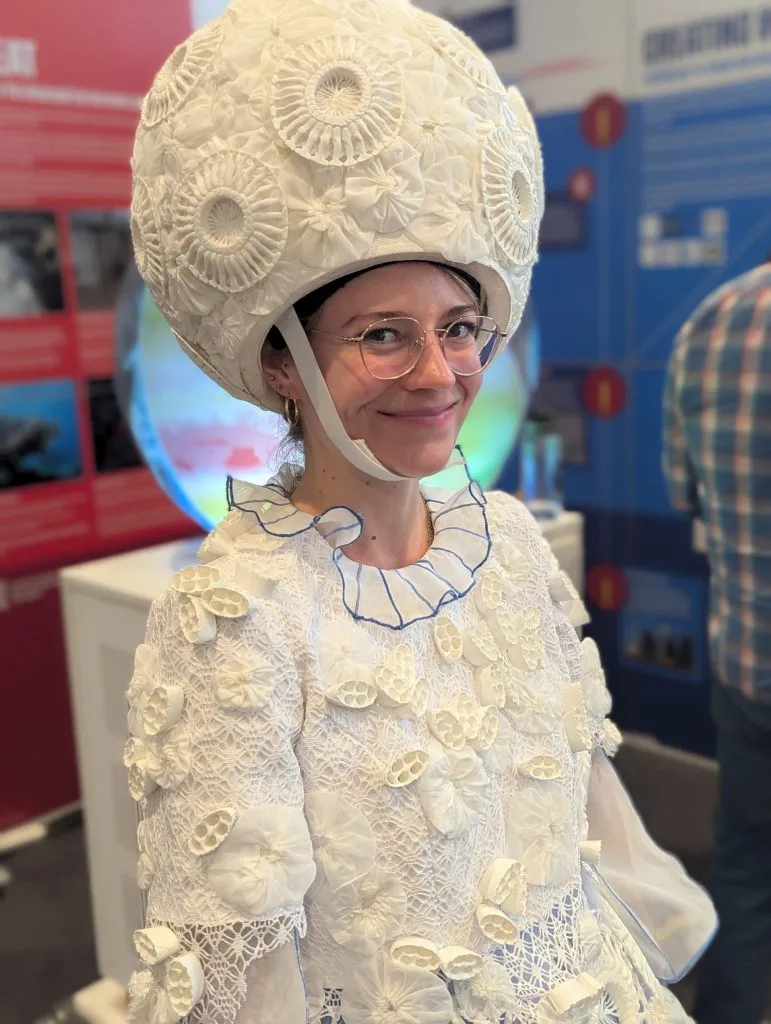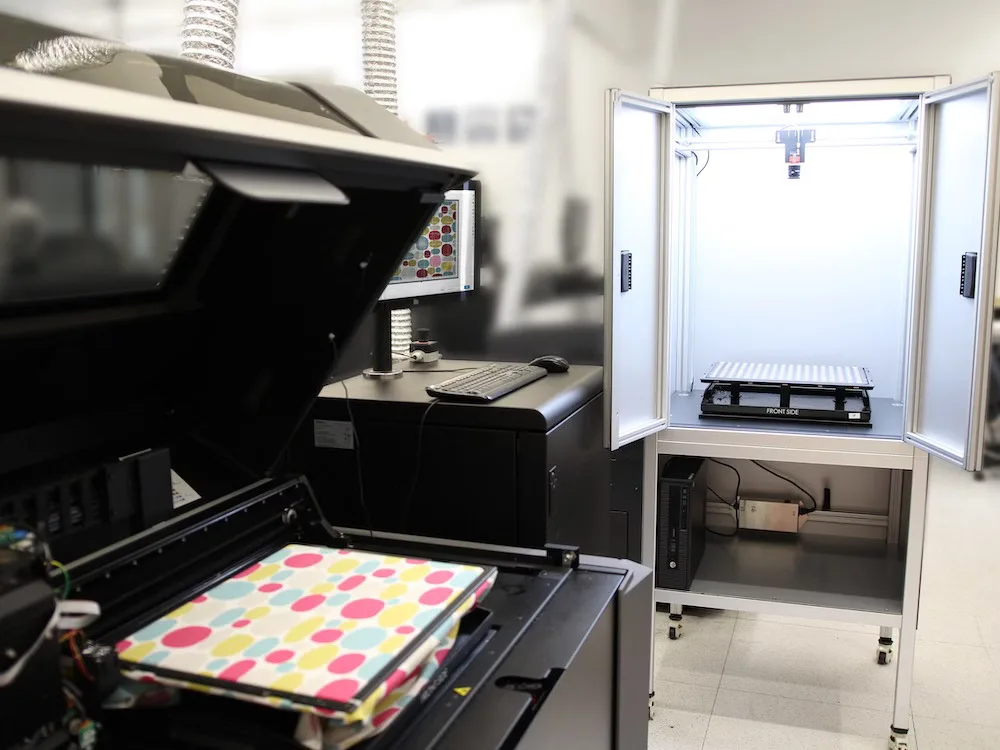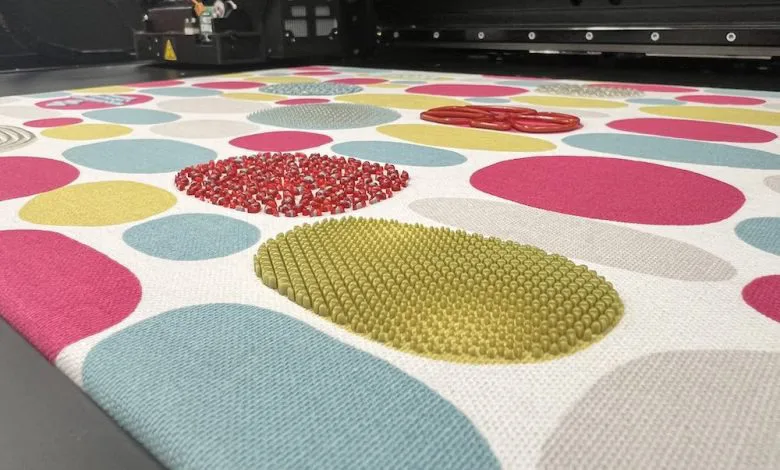The post A Revolutionary 3D Printed Dress Shines a Light on Marine Plankton’s Vital Role in Ocean Health appeared first on 3DSHOES.COM.
]]>Having already been showcased at prestigious venues like the Royal Society Summer Science Exhibition in London and even outside Buckingham Palace, the dress is now an integral part of The Box’s ‘Planet Ocean’ exhibition, which will run until April 27, 2025.
A Fusion of Art, Science, and Sustainability
The dress, designed and created by BA (Hons) Costume Production students Anya Whichello, Dulcie Whichello, Ewan Fairley, Lucy Taylor, and Millie Griffiths under the guidance of their course leader Marie Dunaway, takes inspiration from Coccolithophores—tiny, yet vital, plankton species responsible for significant contributions to the Earth’s carbon cycle. These plankton are a key player in ocean health, making the dress not only a visual spectacle but also an educational tool that draws attention to the vulnerability of marine ecosystems amid the escalating threats of ocean warming and acidification.
Jacqueline Ball, the concept designer behind the project, emphasized that the dress symbolizes the interconnectedness of ocean health and climate change, pointing out the often-overlooked role plankton play in regulating atmospheric carbon dioxide and supporting the marine food chain.
“The level of detail that the students were able to achieve with the resources on our campus is incredible,” said Dunaway. “We’re proud that this work has opened up so many conversations about the role of plankton in the climate crisis, reaching everyone from politicians to scientists.”

‘The Plankton Lady’ Dress: A Technological Marvel
Nicknamed “The Plankton Lady” by those who have seen it, the dress was brought to life using 3D printing technology and plant-based polymers. Specifically, the team used polylactic acid (PLA), a biodegradable plastic derived from renewable resources like corn, potatoes, and tapioca. Over 100 intricate components were 3D printed in the university’s Fab Lab, with the students dedicating six full days to assemble the dress by hand.
Thanks to a newly installed 3D printer at the university, the team was able to meet a challenging ten-day deadline to ensure the dress was ready for its debut at the Royal Society Summer Science Exhibition. The effort paid off when the dress, worn by PML’s Research and Impact Services Officer Elin Meek, became a conversation starter, engaging people of all ages—including Royal Society Fellows—about the critical but often invisible role of plankton in our climate system.
Meek noted, “The dress has allowed us to connect with people in a way we never thought possible. It became a powerful tool for raising awareness about the importance of marine plankton, from young children to seasoned scientists.”
Fashion as a Platform for Environmental Advocacy
At the heart of this project is the notion that fashion, when combined with cutting-edge technology, can become a powerful medium for advocacy. By creating a tangible and wearable representation of plankton’s ecological role, the project has succeeded in making a complex and often abstract topic more accessible to the public.
The integration of sustainable materials, such as the PLA used in the dress, aligns perfectly with the project’s goal of promoting environmental consciousness. Unlike traditional petroleum-based plastics, PLA is biodegradable and represents a more eco-friendly approach to material use, which echoes the need for sustainable solutions in the fight against climate change.
Part of a Broader Movement in Fashion Technology
The 3D-printed dress is not an isolated example of fashion’s growing embrace of technology to push creative and environmental boundaries. Designers and innovators worldwide are increasingly using 3D printing to explore new possibilities in garment production, with the added benefits of reducing waste, enhancing precision, and using sustainable materials.
One notable project that showcases the possibilities of this technology comes from Dutch fashion designer Anouk Wipprecht. Her motion-activated dress, showcased at Formnext 2023, features 3D-printed flexible LED domes, seamlessly integrated without the need for stitching. The dress, made from ChromaFlow 70—a heat-resistant elastomer—highlights the potential of 3D printing to create durable, flexible garments that push the boundaries of traditional fashion design.
Similarly, at Milan Design Week 2023, wedding dress designer Ada Hefetz revealed her collection of 3D-printed dresses, crafted using Stratasys’ direct-to-textile 3DFashion technology. Hefetz’s designs, inspired by the theme of the Flower of Life, incorporate intricate geometric shapes and showcase the unique possibilities of 3D printing to create garments that combine art, fashion, and symbolism.
3D Printing: Revolutionizing the Future of Fashion
These examples demonstrate how 3D printing is transforming the fashion industry, offering endless creative possibilities while emphasizing sustainability. Traditional garment manufacturing often results in significant material waste, but 3D printing allows designers to create intricate designs with minimal waste and maximum efficiency.
For instance, the PLA material used in the ‘Plankton Lady’ dress is not only environmentally friendly but also opens the door to new sustainable production methods. Designers can print only the necessary components, avoiding the excess fabric waste typically associated with cutting and stitching in traditional garment production.
Moreover, the customization possibilities are unparalleled. Designers can experiment with shapes, textures, and structures that would be impossible or too labor-intensive using traditional techniques. The use of biodegradable and recyclable materials also offers solutions for reducing the environmental impact of the fashion industry.
The Role of Collaboration in Tackling Global Challenges
The creation of the 3D-printed plankton-inspired dress serves as a shining example of what can be achieved when the worlds of science and art intersect. Collaborative projects like this one, which blend creativity, technology, and environmental stewardship, offer hope for tackling the complex global challenges posed by climate change.
As curator Sarah Marden from The Box expressed, “The project brings together art and science in a way that inspires curiosity and engagement. It’s a fantastic way to encourage people to think about the role of plankton and how deeply connected we all are to ocean health.”
By engaging the public in this way, projects like ‘The Plankton Lady’ dress not only raise awareness but also foster a deeper understanding of the need to protect the ocean and its fragile ecosystems.
Conclusion: A Dress with a Message for the Future
The 3D-printed ‘Plankton Lady’ dress is much more than a work of art. It is a powerful reminder of the interconnectedness of the natural world and the role we all play in preserving it. Through collaboration between fashion and science, the dress has become a catalyst for conversations about marine conservation, sustainability, and climate action.
As we look to the future, projects like this one point the way toward more innovative, sustainable solutions that inspire both action and creativity. The fusion of fashion, technology, and environmental advocacy has the potential to spark meaningful change, one conversation—and one 3D-printed creation—at a time.
FAQs
1. Why is plankton important for ocean health?
Plankton plays a critical role in the marine food chain and in regulating atmospheric carbon dioxide, making them essential for both ocean health and climate stability.
2. What materials were used to create the 3D-printed dress?
The dress was made from plant-based polylactic acid (PLA), a biodegradable plastic derived from renewable sources like corn, potatoes, and tapioca.
3. How does 3D printing benefit the fashion industry?
3D printing allows for precise designs, minimizes waste, and supports the use of sustainable materials, making it an innovative solution for fashion production.
4. What is Coccolithophores, and why are they important?
Coccolithophores are microscopic plankton that contribute to the carbon cycle by capturing and storing carbon dioxide, which helps mitigate the effects of climate change.
5. How can fashion raise awareness about environmental issues?
Fashion can be a powerful platform for advocacy, using visual design and innovation to engage the public on issues like climate change, sustainability, and conservation.
The post A Revolutionary 3D Printed Dress Shines a Light on Marine Plankton’s Vital Role in Ocean Health appeared first on 3DSHOES.COM.
]]>The post New Stratasys TechStyle Alignment Solution Revolutionizes Fashion 3D Printing appeared first on 3DSHOES.COM.
]]>
Streamlining Precision in Fashion 3D Printing
The TechStyle Fabric Alignment Station addresses a critical challenge in textile 3D printing: aligning 3D printed designs with pre-existing fabric patterns. This is especially useful for intricate fashion pieces where precise placement of 3D elements, such as logos or textures, is vital. Designers can now place their creations accurately on garments, including pockets, patches, or other specific sections, eliminating the manual adjustments that were often necessary before. This improves overall production efficiency while reducing material waste, a significant advancement for sustainability in fashion.
Integration with Other Techniques
Another key feature of the alignment station is its ability to seamlessly integrate 3D printing with other garment-making techniques. Designers can combine 3D printing with embroidery, laser cutting, embossing, and 2D silk printing. This hybrid approach enables greater creative freedom and customization, allowing designers to meet the growing demand for personalized fashion.
Efficiency and Sustainability
By eliminating the need for multiple alignment attempts, the TechStyle Fabric Alignment Station significantly cuts down on production time. This also results in a reduction of material waste, making it a more sustainable option for fashion houses and textile printing labs. The solution fits perfectly into Stratasys’ broader mission of Mindful Manufacturing, which aims to foster environmentally conscious production methods across industries.

Real-World Applications
The J850 TechStyle platform has already been used in several cutting-edge projects. For instance, Italdesign, an engineering company, utilized the system in the Climb-E concept car to incorporate unique 3D printed textures onto the vehicle’s interior fabric elements. Additionally, Atelier des Refusés used the technology to create a series of fashion-forward cushions inspired by fungi, showcasing the platform’s versatility.
Conclusion
Stratasys’ TechStyle Fabric Alignment Station is poised to revolutionize the world of fashion 3D printing. By automating alignment and integrating with various traditional garment-making techniques, it offers unprecedented precision, efficiency, and sustainability. As demand for personalized fashion continues to grow, innovations like this will help designers push the boundaries of creativity while reducing waste.
FAQs
- What is the Stratasys TechStyle Fabric Alignment Station?
- It is an accessory designed to enhance the precision of 3D printing on fabric by automating the alignment process, ensuring accurate placement of designs on garments.
- What are the benefits of the TechStyle Fabric Alignment Station?
- The station improves accuracy, reduces material waste, cuts production time, and integrates easily with other textile manufacturing techniques like embroidery and laser cutting.
- Which 3D printer does this station work with?
- It is compatible with the Stratasys J850 TechStyle 3D printer, which is known for its ability to print full-color 3D designs directly onto fabric.
- How does it contribute to sustainability?
- By minimizing material waste and reducing the need for trial and error, the system promotes more sustainable manufacturing practices.
- Who can benefit from this technology?
- Fashion designers, textile manufacturers, and design studios that require precise, high-quality 3D printing on fabric will find this solution particularly beneficial.
The post New Stratasys TechStyle Alignment Solution Revolutionizes Fashion 3D Printing appeared first on 3DSHOES.COM.
]]>